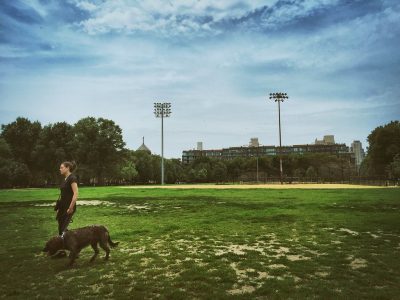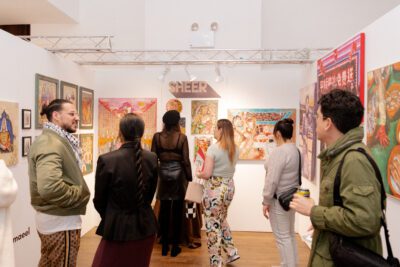In Bed-Stuy, a Garden Center Is a Community Sanctuary
In the heart of Bed-Stuy sits a Shangri-La of sorts. A place where locals shoot the shit about politics, greenery, love, and growth. Deborah Young, purveyor of colorful plants and stories alike, is the woman responsible for this no frills neighborhood nursery, garden, and—really—community center. She is also fiercely committed to preserving the character and integrity of that part of New York that is fast disappearing.
When I go to meet her at Seasons, it is unseasonably warm for a Saturday afternoon in February, and there is a slight shift of energy in the air. I exchange pleasantries and smiles with familiar neighborhood faces. Coats are doffed and I swear I smell sunscreen, subtly. In weeks previous, we would have been too busy navigating through snow mounds and shielding our skin from the wind to notice one another. Now, spring is near.
Deborah, and Seasons, is about a ten minute walk from my house, and something about going there by foot, as opposed to taking public transportation, feels right. As I walk I imagine that this is precisely what Deborah had in mind when she opened her business. Later, in her raspy, self-assured timbre, she confirms my hunch: “I didn’t want it to just be a place for me to make a few dollars and get my mortgage paid. I wanted to bring something to the community. I wanted to bring a place of sanctuary and relaxation. I mean, people come in here and they just wanna sit. I don’t have a problem with that,” she says, just as another customer meanders in, eyes wide with wonder and gratitude for Seasons’s existence.
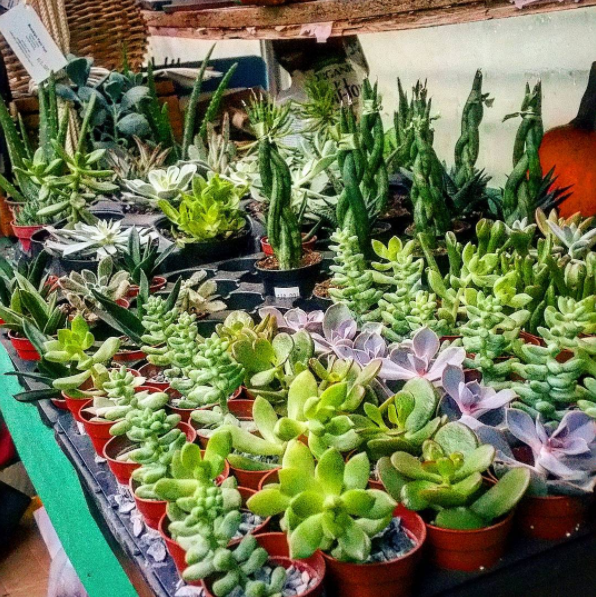
I recognize this look because I, too, am one of those people enamored with Deborah’s mind and the world she has spun from it—the wicker baskets, succulents, piles of fecund earth and chimes, which sound intermittently throughout our conversation; the “noon-ish” opening time and the disarray of garden oddities strewn around the greenhouse. All of it is cohesively, infinitely pleasing.
When I arrive we dive straight into it. She warns me that she talks a lot, as a warning, but I could listen to this woman for hours whether she’s chronicling the origins of punk and hip-hop in New York City or discussing theology and her deep-seated fascination with the Council of Nicaea. But I am most struck when she fleshes out her family tree, and I see her accompanying facial expressions that indicate that, though she’s recounted these stories many times before, she feels proud to exist as its progeny.
“I come from a long line of hustlers. Entrepreneurs they call them these days,” she clarifies, with raised brows and a smirk. “My great grandmother was a freed slave who left the plantation and migrated to James City, North Carolina. She was a real piece of work,” she adds, almost boastfully. I see how history shapes her. How, even though she is a free and independent woman, she carries the plight of her ancestry. She does not forget where she came from.
“During the time of reconstruction, the majority of black people were sharecroppers. It was an agricultural society, so they farmed to live. They were basically still living as slaves,” she says soberly. Her tenacious telling mirrors her family’s perseverance and resourcefulness. But of course they were more than sharecroppers. As she continues to follow her family’s migratory and professional trajectory, I learn that her grandfather was a bootlegger who ran moonshine up and down the east coast. Her father was a craftsman who taught himself to sew. And her great uncle, a decorated solider in World War I. They were all filled with this extraordinary willpower and forward motion, which led a certain few from the Carolinas all the way to Bed-Stuy during the Great Migration, in which 6 million African-Americans moved from the rural South to the urban Northeast, Midwest, and West, in search of greener and less-hostile pastures.
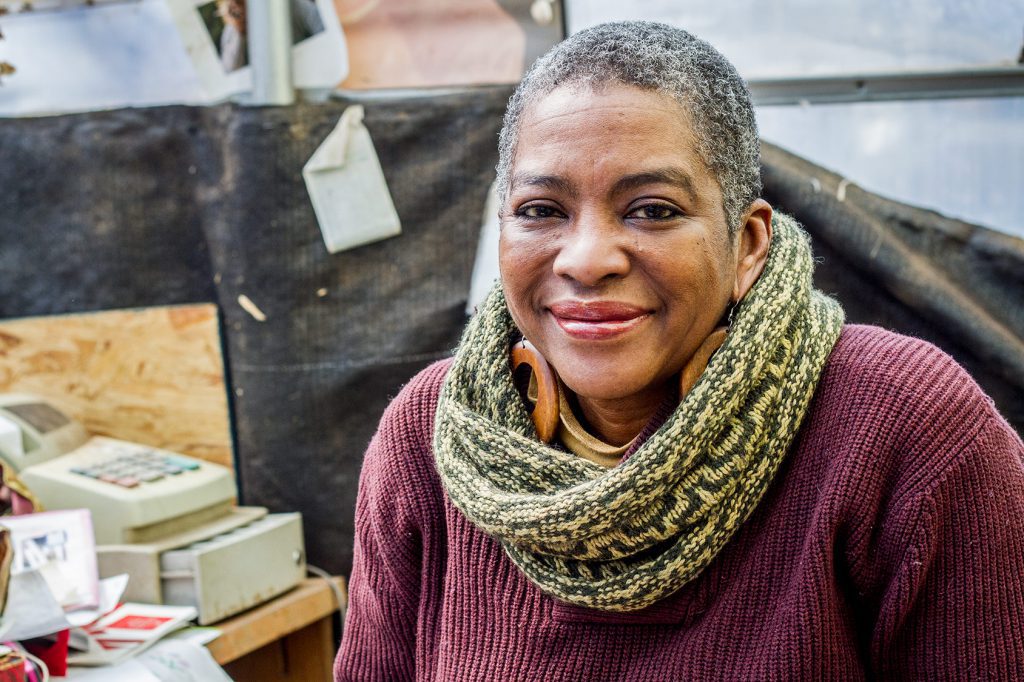

She tells me one such story of resilience in which her father was working on a field as a young boy and a truck fell over onto his back and broke it. She looks at me matter-of-factly and says, “They took him to some doctor, who said he was going to die. So my great grandmother took him home and she made a cast out of clay and mustard and camphor and menthol and herbs. And she put him in that cast. And I’m here, so you know what happened.”
Deborah Young was born in 1960 and raised in Bed-Stuy. She tells me how she loved science and boys, and we both nod our heads vigorously. Amusedly. But she is not interested in talking about boys—unless, of course, it’s about her father, whom she admires greatly and has accepted, flaws and all.
“Most of the stuff I learned when I was younger was from my father. He taught me how to sew and woodwork and use power tools. And he taught me carpentry and a little electrical. And he taught me how to hunt deer and possums. He even taught me how to bet on the races and fish and swim and ride a horse,” she recalls gratefully. “He also taught me how to grow. I’ve always loved growing. We had a little plot in our backyard and Morning Glory was the first seed I planted. It still grows in the house I grew up in.”
I ask Deborah if there was anything like Seasons in her neighborhood when she was growing up, and she shakes her head and tells me how far they would have to travel to procure seeds. “Seasons was the first nursery in Bed-Stuy. We used to have to leave Brooklyn and go to Kings County Nursery, Mill Lane, and Market Garden Center.” She goes on to tell me that as her father got older and sicker, he wouldn’t come out and work with her, but he would always look over her and tell her if she was doing something incorrectly. And her mother? “Once she left the farm, that was it for her. She would not be out there trimming and weeding and digging.” I am silent, feeling a deeper meaning in those words.


“Back in the day, most of these lots that you see this new construction on were leased to civic organizations, block associations, and churches for community gardens. People would go there and get their little plot, just like they do now, but there were so many more of them,” she reminisces. The Brooklyn landscape began shifting in both physical and sociocultural ways, she continues, and swathes of green were traded for blocks of cement. When I tell her that it seems as though most of my city-living millennial friends are becoming more and more desperate for greenery, she nods knowingly. She saw it coming.
“This is why I opened Seasons. I had always told myself that whatever I was going to do, I was going to do it in my community. It all starts on a local level. That’s where things have to change.”
Though Deborah has always worked in her community, growing has not always been her vocation. She spent the first twenty years of her professional life running a nonprofit organization called Community Service Centre Area 4, which was a senior citizen outreach program. There, she ran a food pantry, helped connect the elderly to services and, perhaps most importantly, attempted to alleviate loneliness. Afterward, she began working for the Department of Commerce until her mother fell ill. Deborah spent the final five years of her mother’s life caring for her.
“Seasons is a 30-year-old dream. I loved flower arranging and I had always wanted to run a florist, but then I realized what it took to run one. I then started landscaping. I had a company I ran out of my house decorating for special events—holidays and such—until I diversified into landscape design. That’s when I started growing professionally and decided to get my license.”

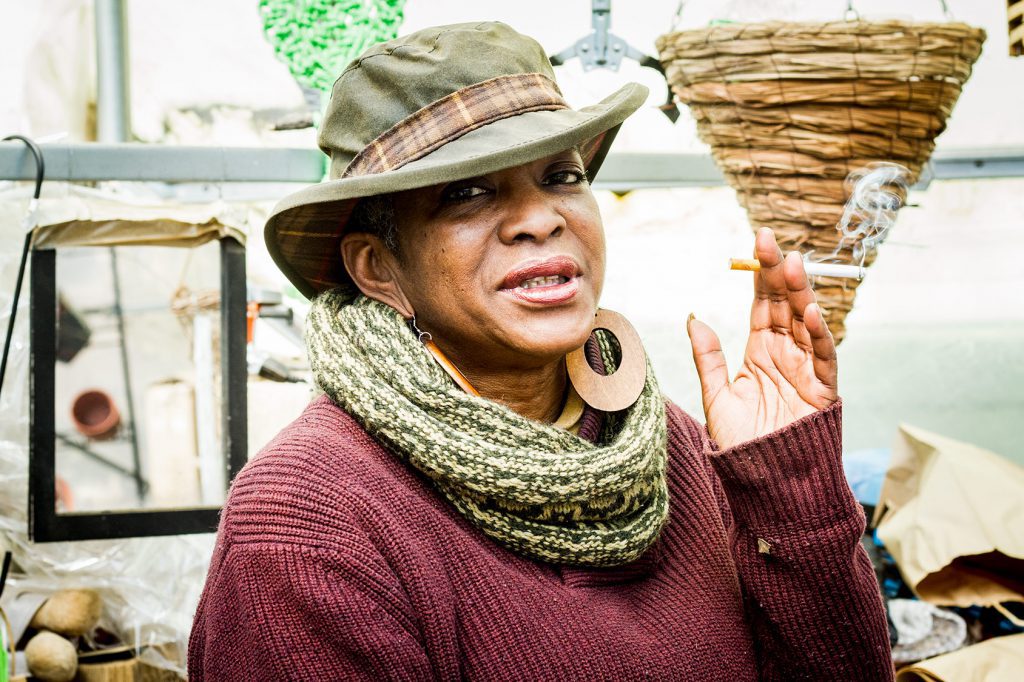

Since then, Seasons has become a Bed-Stuy mainstay for reasons beyond its crop. When I first moved to the neighborhood, my room had nothing in it save a few museum post cards tacked on white walls, a mattress on the floor, and more books than clothing. I had never owned a plant for I feared I would kill it instantly.
A friend in the neighborhood told me about Seasons. I visited, eager to purchase my first-ever plant. Embarrassed, I told Deborah I was a total novice, and instantly, she made me feel like I was a part of something. It’s a special skill some people have, to be warm without being ingratiating, and Deborah belongs to that rare subset. She complimented me on my choice of plant—a pink-hued variety of agalaonema—and told me I was going to learn to repot it myself, right there in front of her. And I did just that. When she walked past me, surveying my progress in her black turtleneck, slouchy denim trousers, and hiking shoes, she smiled and playfully told me that she’d have to consider hiring me. That same plant is still alive on my windowsill with sprightly new tendrils. I can’t help but marvel at its willpower and life force.
When I tell Deborah about this interaction, now months later, she laughs and says she remembers it. She’s a storehouse of information, carrying it all around with her. Then, after a brief silence, she looks at a photograph of her mother hanging behind her. She appears flawless in red lipstick and an updo. “That’s my mommy,” she says in that register reserved for nostalgia.
Earlier on in our conversation, Deborah had said that “history is written by those who win.” People like Deborah Young are rewriting it, embodying it even, to reveal the truth. Her willpower, life force—and beautiful resilient plants—are testament to it.
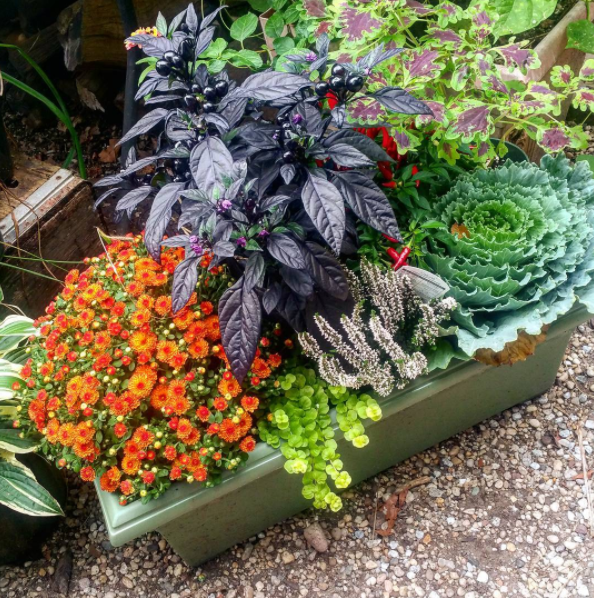

Portraits by Jane Bruce
Garden center images via Season’s Instagram
You might also like 














